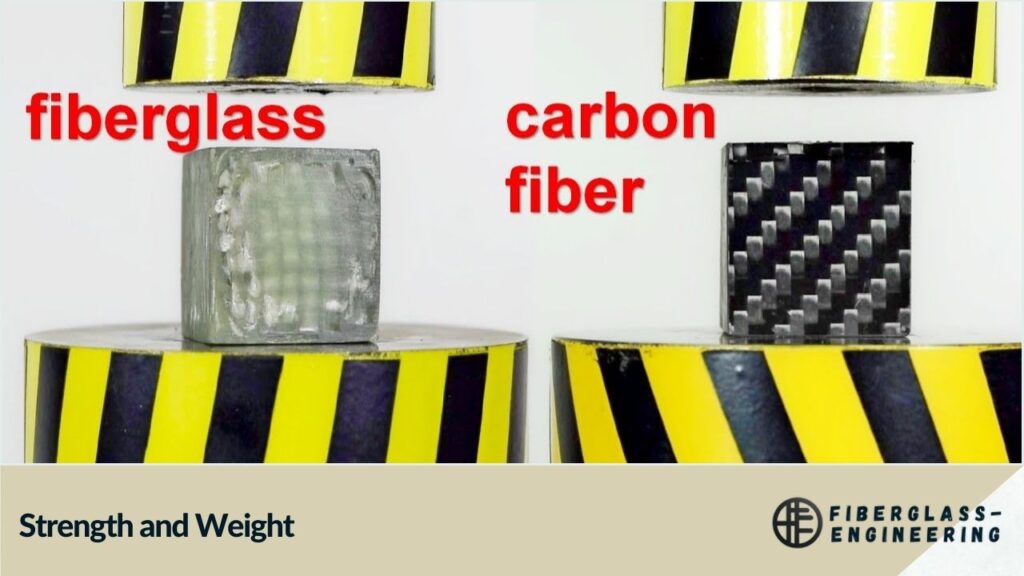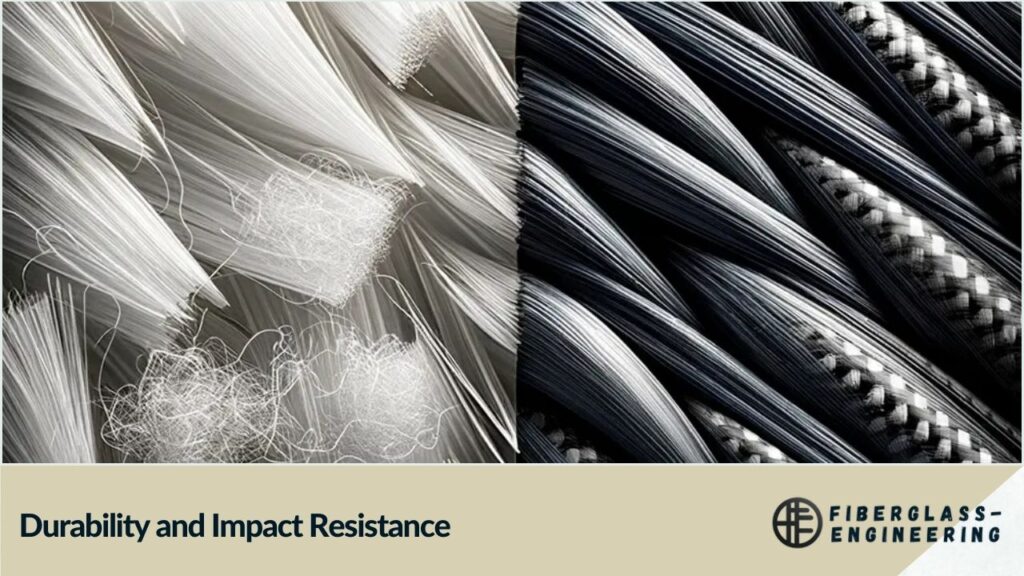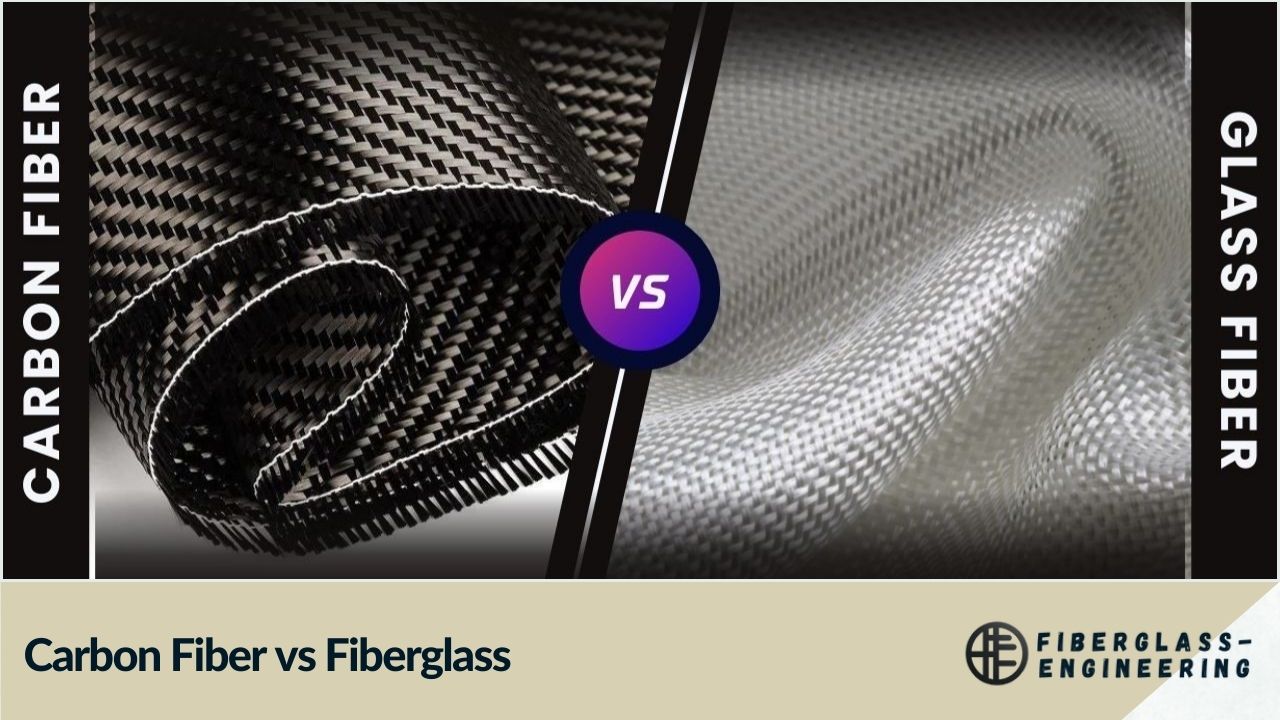In the world of composite materials, carbon fiber and fiberglass stand out as two popular choices for various applications. Both materials offer unique properties that make them suitable for different industries and purposes. This comprehensive comparison will delve into the key differences between carbon fiber and fiberglass, helping you determine which material is better suited for your specific needs.
Composition and Manufacturing
Carbon fiber and fiberglass are both composite materials, but their composition and manufacturing processes differ significantly.
Carbon Fiber: This material consists of thin strands of carbon atoms bonded together in a crystalline formation. The manufacturing process involves heating carbon-rich organic precursors, such as polyacrylonitrile (PAN) or pitch, to extremely high temperatures. This process, known as carbonization, results in long, strong carbon fibers that are then woven into fabrics or combined with resins to create composite materials.
Fiberglass: As the name suggests, fiberglass is made from glass fibers. The manufacturing process involves melting glass and extruding it through tiny holes to create thin glass filaments. These filaments are then woven into fabrics or combined with resins to form composite materials.
Strength and Weight

One of the most critical factors in choosing between carbon fiber and fiberglass is their strength-to-weight ratio.
Carbon Fiber: This material is renowned for its exceptional strength-to-weight ratio. Carbon fiber is significantly stronger and stiffer than fiberglass while being approximately 15% lighter. This makes it an ideal choice for applications where weight reduction is crucial, such as in aerospace, automotive, and high-performance sporting goods industries.
Fiberglass: While not as strong as carbon fiber, fiberglass still offers a respectable strength-to-weight ratio. It provides good tensile strength and is more flexible than carbon fiber, making it suitable for applications that require some degree of flexibility.
Rigidity and Flexibility

The rigidity and flexibility of these materials play a significant role in determining their suitability for different applications.
Carbon Fiber: Known for its high stiffness and rigidity, carbon fiber is ideal for applications that require minimal flexing or deformation under load. This property makes it excellent for use in structural components, aerospace applications, and high-performance sporting equipment.
Fiberglass: Compared to carbon fiber, fiberglass is more flexible and has a lower modulus of elasticity. This flexibility can be advantageous in certain applications, such as boat hulls or wind turbine blades, where some degree of flex is desirable.
Durability and Impact Resistance

When it comes to durability and impact resistance, both materials have their strengths and weaknesses.
Carbon Fiber: While incredibly strong, carbon fiber can be brittle and prone to cracking or shattering under sudden, sharp impacts. However, it exhibits excellent fatigue resistance and can withstand repeated stress cycles without significant degradation.
Fiberglass: Fiberglass is generally more durable and resistant to impact than carbon fiber. Its flexibility allows it to absorb impacts better without cracking or shattering. This makes fiberglass a preferred choice for applications that may be subject to frequent impacts or rough handling.
Cost Considerations
The cost difference between carbon fiber and fiberglass is significant and often a deciding factor in material selection.
Carbon Fiber: Due to its complex manufacturing process and high demand, carbon fiber is considerably more expensive than fiberglass. The cost can be justified in applications where its superior strength-to-weight ratio and stiffness are critical.
Fiberglass: Fiberglass is generally much more affordable than carbon fiber, making it a cost-effective choice for many applications. Its lower price point allows for wider use in consumer products and large-scale industrial applications.
Environmental Factors and Corrosion Resistance
Both materials offer excellent resistance to environmental factors and corrosion, but with some differences.
Carbon Fiber: This material is highly resistant to corrosion and performs well in harsh environments. It is also resistant to UV radiation, making it suitable for outdoor applications. However, carbon fiber can be susceptible to galvanic corrosion when in contact with certain metals.
Fiberglass: Known for its excellent corrosion resistance, fiberglass performs exceptionally well in marine environments and chemical processing applications. It is also resistant to UV radiation and can withstand exposure to various chemicals and solvents.
Electrical and Thermal Properties
The electrical and thermal properties of these materials can be crucial in certain applications.
Carbon Fiber: This material is electrically conductive, which can be advantageous in applications requiring EMI shielding or static dissipation. It also has good thermal conductivity, making it useful in heat management applications.
Fiberglass: Unlike carbon fiber, fiberglass is an excellent electrical insulator. It also has low thermal conductivity, making it ideal for applications where thermal insulation is required.
Aesthetic Considerations
The appearance of the final product can be an important factor in material selection, especially for consumer goods.
Carbon Fiber: Known for its distinctive woven pattern and sleek, high-tech appearance, carbon fiber is often chosen for its aesthetic appeal in luxury and performance products.
Fiberglass: While not as visually striking as carbon fiber, fiberglass can be molded and finished to achieve a wide range of appearances, from smooth and glossy to textured surfaces.
Applications and Industry Usage
The unique properties of carbon fiber and fiberglass make them suitable for different applications across various industries.
Carbon Fiber: Commonly used in aerospace, automotive (especially in high-performance and racing vehicles), sporting goods (such as bicycles, tennis rackets, and golf clubs), and high-end consumer electronics.
Fiberglass: Widely used in marine applications (boat hulls and decks), construction (insulation, roofing, and structural components), automotive (body panels and components), and wind energy (turbine blades).
In conclusion, the choice between carbon fiber and fiberglass depends on the specific requirements of your application. Carbon fiber excels in high-performance, lightweight applications where strength and stiffness are critical. Fiberglass, on the other hand, offers a more cost-effective solution with good strength, flexibility, and durability for a wide range of applications. By carefully considering factors such as strength-to-weight ratio, cost, durability, and specific application requirements, you can make an informed decision on which material is better suited for your needs.
FAQs
- Is carbon fiber stronger than fiberglass?
Yes, carbon fiber is significantly stronger and stiffer than fiberglass, with a higher strength-to-weight ratio. - Which is more expensive, carbon fiber or fiberglass?
Carbon fiber is considerably more expensive than fiberglass due to its complex manufacturing process and high demand. - Is fiberglass more durable than carbon fiber?
Fiberglass is generally more impact-resistant and durable in rough handling situations compared to carbon fiber. - Can carbon fiber and fiberglass be used interchangeably?
While they have some overlapping applications, they are not always interchangeable due to differences in properties and cost. - Which material is better for marine applications?
Fiberglass is often preferred for marine applications due to its excellent corrosion resistance and lower cost.

